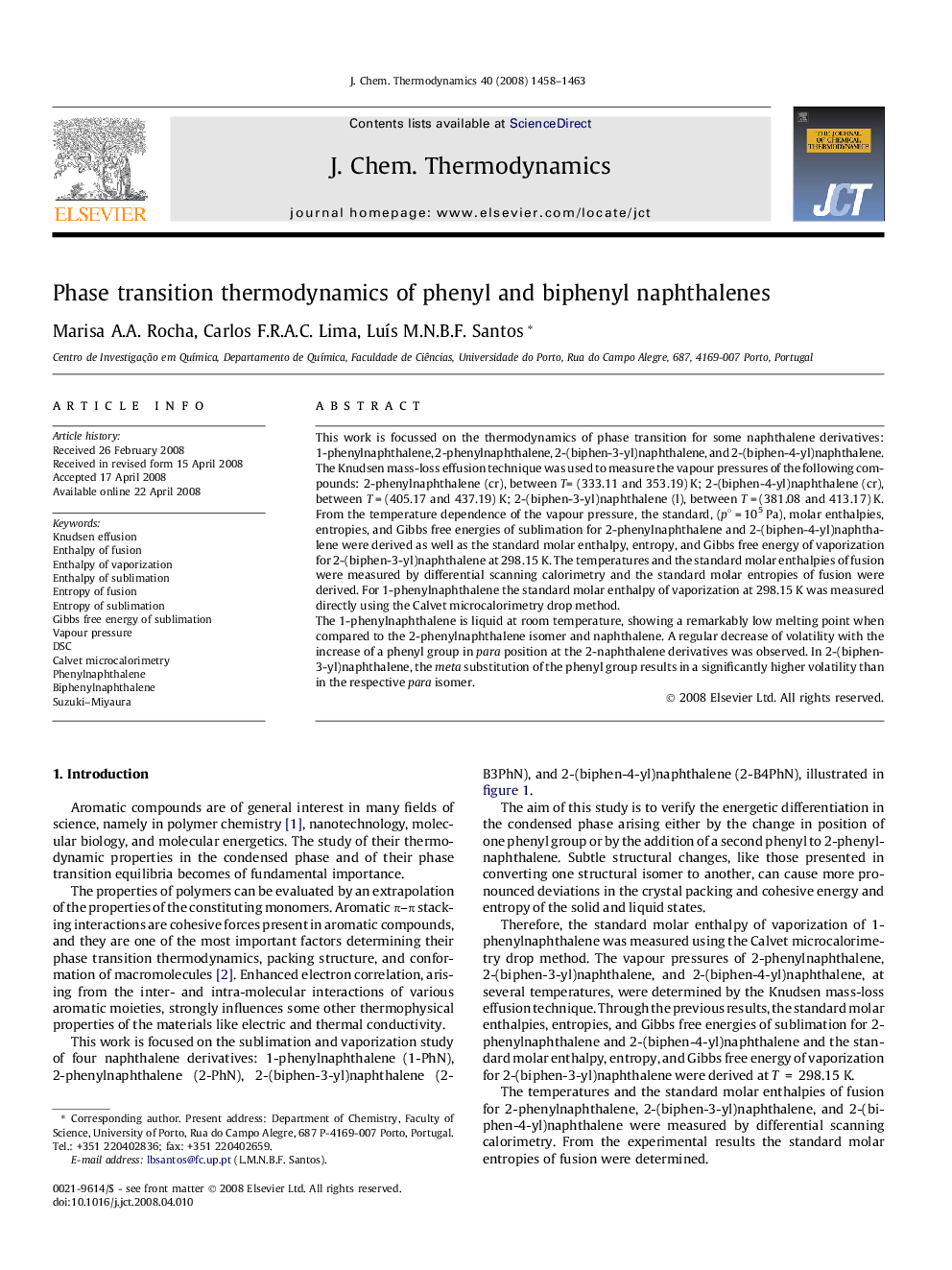| Article ID | Journal | Published Year | Pages | File Type |
|---|---|---|---|---|
| 217131 | The Journal of Chemical Thermodynamics | 2008 | 6 Pages |
This work is focussed on the thermodynamics of phase transition for some naphthalene derivatives: 1-phenylnaphthalene, 2-phenylnaphthalene, 2-(biphen-3-yl)naphthalene, and 2-(biphen-4-yl)naphthalene.The Knudsen mass-loss effusion technique was used to measure the vapour pressures of the following compounds: 2-phenylnaphthalene (cr), between T= (333.11 and 353.19) K; 2-(biphen-4-yl)naphthalene (cr), between T = (405.17 and 437.19) K; 2-(biphen-3-yl)naphthalene (l), between T = (381.08 and 413.17) K. From the temperature dependence of the vapour pressure, the standard, (p∘ = 105 Pa), molar enthalpies, entropies, and Gibbs free energies of sublimation for 2-phenylnaphthalene and 2-(biphen-4-yl)naphthalene were derived as well as the standard molar enthalpy, entropy, and Gibbs free energy of vaporization for 2-(biphen-3-yl)naphthalene at 298.15 K. The temperatures and the standard molar enthalpies of fusion were measured by differential scanning calorimetry and the standard molar entropies of fusion were derived. For 1-phenylnaphthalene the standard molar enthalpy of vaporization at 298.15 K was measured directly using the Calvet microcalorimetry drop method.The 1-phenylnaphthalene is liquid at room temperature, showing a remarkably low melting point when compared to the 2-phenylnaphthalene isomer and naphthalene. A regular decrease of volatility with the increase of a phenyl group in para position at the 2-naphthalene derivatives was observed. In 2-(biphen-3-yl)naphthalene, the meta substitution of the phenyl group results in a significantly higher volatility than in the respective para isomer.
